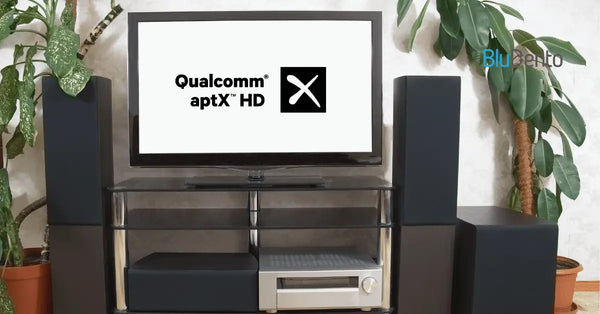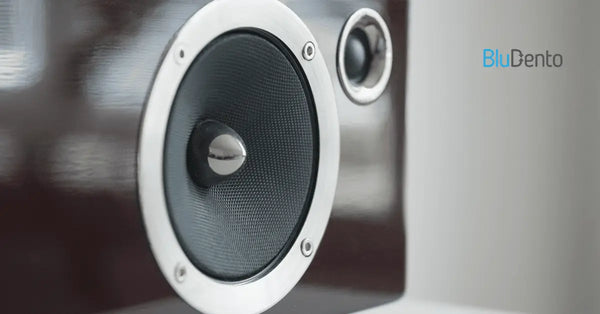Beginners Guide 2 Channel Receivers

In a world drowning in digital noise, 2 channel receivers offer a breath of fresh air for audio purists. These sleek devices bridge the gap between simplicity and sonic excellence, transforming two-speaker setups into dynamic soundscapes. Whether you’re a vinyl enthusiast or a casual listener craving clarity, understanding how to harness the power of 2 channel receivers can redefine your listening experience. Let’s unpack their magic—from technical specs to real-world setups—and why they remain a cornerstone of high-fidelity audio.
Why 2 Channel Receivers Are the Secret Weapon for Audiophiles
There’s something undeniably elegant about a stereo system powered by 2 channel receivers. Unlike bulky home theater units, these receivers focus on two channels—left and right—ensuring every note, whisper, and beat is delivered with surgical precision. For audiophiles, this isn’t just a preference; it’s a philosophy.
The beauty of 2 channel receivers lies in their ability to eliminate distractions. With no subwoofers or rear speakers hogging space, the setup feels intimate. Yet, don’t let their minimalism fool you. Modern models pack features like Bluetooth streaming, phono preamps for turntables, and even DACs (Digital-to-Analog Converters) to handle high-res audio files. Brands like Yamaha, Marantz, and Denon have mastered the art of balancing simplicity with cutting-edge tech.
But why stick to two channels? The answer is clarity. Multi-channel systems often sacrifice detail to create a “surround” effect, while 2 channel receivers dedicate their processing power to perfecting the stereo image. Imagine hearing a live orchestra where each instrument occupies its own space—no bleed, no muddiness. That’s the promise of these receivers.
2 Channel Receivers vs. Surround Sound Systems: Picking the Perfect Fit
| Feature | 2 Channel Receivers | Surround Sound Systems |
|---|---|---|
| Speaker Count | 2 speakers (left/right) | 5+ speakers (front, center, rear, subwoofer) |
| Best For | Music, small rooms, minimalists | Movies, gaming, large spaces |
| Sound Focus | Depth, imaging, tonal accuracy | Spatial immersion, dynamic range |
| Price Range | $200–$2,000+ | $500–$5,000+ |
| Setup Complexity | Beginner-friendly | Requires calibration, more wiring |
If your heart races at the thought of crisp vocals and tight basslines, 2 channel receivers are your ally. Surround systems, while thrilling for movies, can overcomplicate things for stereo devotees. For example, a 2 channel setup might cost half as much as a 5.1 system but outperform it in musical nuance. However, if you’re a movie buff who craves explosions rumbling from behind, surround sound wins.
The key takeaway? 2 channel receivers aren’t outdated—they’re specialized. They thrive where purity of sound matters most.
The Technical Magic Behind 2 Channel Receivers
At their core, 2 channel receivers are amplifiers with a built-in preamp and tuner. But their technical prowess goes deeper:
- Amplification: They convert low-level signals from sources (like phones or turntables) into high-powered outputs for speakers.
- Impedance Matching: Ensuring speakers and receivers are compatible is critical. Mismatching can lead to distorted sound or blown components.
- Signal Processing: While they lack surround decoding, many include room correction software (e.g., Yamaha’s YPAO) to tweak EQ settings.
For instance, a 100W per channel receiver can drive bookshelf speakers effortlessly, but pairing it with power-hungry floor-standing models might strain the system. Always check speaker sensitivity ratings (measured in dB)—a 90dB speaker paired with a 50W receiver can sound louder than a 85dB speaker with 100W.
Pro tip: Look for models with Class D amplifiers for efficiency. They run cooler and save energy, perfect for compact spaces.
Top 5 Features to Prioritize When Buying 2 Channel Receivers
- Power Output (Watts per Channel): Match this to your speaker needs.
- Connectivity Options: HDMI, USB, optical, and analog inputs for flexibility.
- DAC Quality: Crucial for streaming hi-res audio from computers or phones.
- Room Calibration Tools: Features like Audyssey or Dirac Live can transform your space.
- Streaming Compatibility: Spotify Connect, AirPlay, or Roon readiness for wireless ease.
| Feature | Why It Matters |
|---|---|
| Power Output | Underpowered receivers cause clipping and damage. |
| HDMI Inputs | Future-proofs for connecting TVs or gaming rigs. |
| Phono Preamp | Essential for turntable users (no need for external gear). |
| Bluetooth Support | Lets you stream from smartphones without latency. |
A standout example is the Denon AVR-X1700H, which blends 80W per channel with HEOS streaming and Dolby Atmos support—a hybrid for purists and modernists alike.
How to Set Up Your 2 Channel Receivers for Maximum Impact
- Speaker Placement: Position speakers 2–3 feet from walls and angle them toward the listening spot.
- Wiring: Use 14-gauge cables for runs under 50 feet; thicker cables for longer distances.
- Calibration: Run the receiver’s auto EQ system, then tweak bass/treble manually if needed.
- Source Optimization: Set your streaming service to lossless mode (e.g., Tidal HiFi) for best results.
Avoid common mistakes like placing speakers too close to corners (which booms up bass unnaturally) or using mismatched speaker cables. For vinyl lovers, ensure the turntable connects to the phono input—not a standard line-in.
Common Pitfalls to Avoid with 2 Channel Receivers
Even the best 2 channel receivers can underwhelm if misused. Here’s what to dodge:
- Impedance Mismatch: 4-ohm speakers on an 8-ohm-rated receiver? Disaster waiting to happen.
- Overloading Inputs: Plugging too many devices into limited ports causes signal degradation.
- Ignoring Room Acoustics: A carpeted room with soft furnishings absorbs high frequencies; balance with hardwood or reflective panels.
Case in point: A friend once paired his 2 channel receiver with a subwoofer, thinking it would enhance bass. Result? A muddy, disjointed soundstage. Stick to the basics for stereo magic.
2 Channel Receivers for Gaming and Streaming: Hidden Gems
Gaming setups often overlook 2 channel receivers, but they’re a match made in heaven. Here’s why:
- Low Latency: Bluetooth 5.0 and aptX-LL ensure sync between audio and on-screen action.
- Clarity for Dialogue: Two-channel setups excel at rendering clear voiceovers during streams.
- Sleek Design: Perfect for streamers who want a clutter-free desk.
The Bludento B2 even includes a built-in network streamer, letting you connect directly to your router for lag-free gameplay audio. Pair it with a mic monitor to hear your voice without headphones—a streamer’s dream.
FAQs: Everything You’ve Wondered About 2 Channel Receivers
Can I add a subwoofer to a 2 channel receiver?
While not designed for it, some models allow a subwoofer via a dedicated sub-out port. Use a low-pass crossover to blend bass seamlessly.
Are 2 channel receivers good for movies?
They lack surround decoding, but many support Dolby Digital via stereo speakers, creating a virtual 3D effect.
Do I need a separate amplifier?
Nope! 2 channel receivers have amplification built-in—just connect your speakers and sources.
How do I upgrade from a stereo receiver to surround sound?
Check if your current unit has pre-outs for a subwoofer or surrounds. If not, you’ll need a new receiver.
Can I use wireless speakers with these receivers?
Yes, if they have Wi-Fi or Bluetooth. Alternatively, pair with a wireless speaker adapter like the Sonos Amp.
Are tube amplifiers better for 2 channel setups?
Tubes add warmth, but solid-state amps offer more accuracy and reliability. It’s a matter of taste!
Conclusion
2 channel receivers are the unsung heroes of high-fidelity audio. They prove that less can indeed be more—crisp highs, punchy mids, and a soundstage so wide it’ll make you forget the rest of the world. Whether you’re building a music-centric den or a streamlined streaming rig, these receivers deserve a spot in your gear lineup.
Remember: The right setup turns technical specs into emotional experiences.














